You should monitor your sleep heart rate patterns because they reveal critical health insights invisible during waking hours. Your heart rate naturally drops 20-30% during sleep, reaching 40-60 bpm in healthy adults, and deviations exceeding 10 bpm from your baseline can signal cardiovascular issues, infections, or sleep disorders before symptoms appear. Modern wearables like WHOOP and Oura Ring offer 99%+ accuracy for tracking these patterns. Understanding these nocturnal rhythms opens extensive wellness optimization strategies.
Understanding Normal Sleep Heart Rate Characteristics and Variations
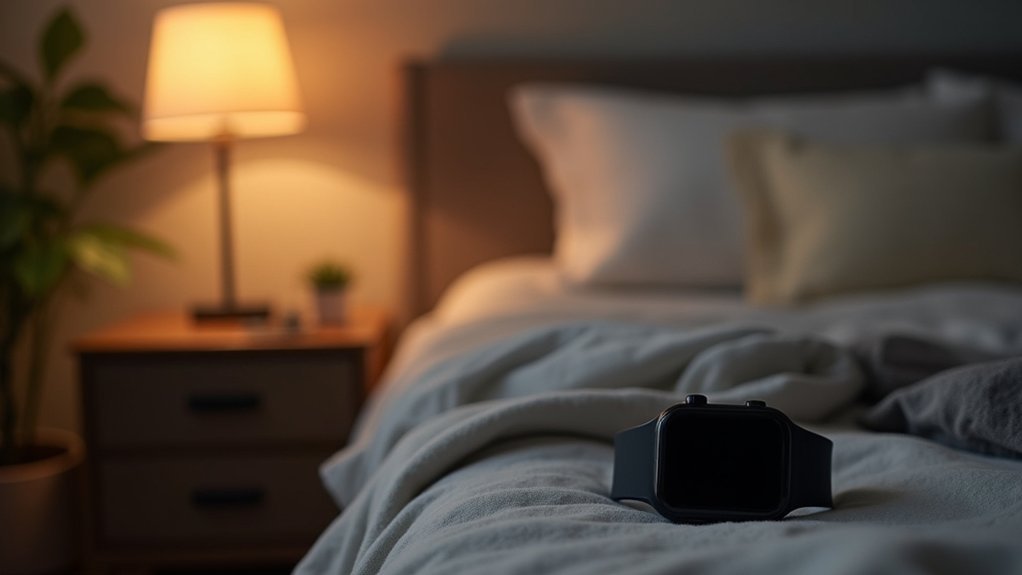
When you drift off to sleep, your heart rate naturally decreases as your body enters its restorative phase, typically dropping to 40–60 beats per minute in healthy adults. This represents a 20–30% reduction from your daytime resting rate.
Sleep triggers a remarkable 20-30% drop in heart rate, signaling your body’s transition into deep restorative mode.
Your heart rate varies throughout different sleep stages—it gradually declines during light sleep, reaches its lowest during deep sleep (often below 60 bpm), and can fluctuate back to waking levels during REM sleep.
Each 90-minute sleep cycle creates dynamic heart rate shifts, with 4–6 cycles occurring nightly.
Several factors influence your sleeping heart rate: age typically lowers it, physical fitness creates lower rates, while health conditions like hypertension or diabetes can elevate it.
Stress, poor sleep quality, and environmental factors also impact these patterns. Rather than comparing your heart rate to others, focus on personal baseline comparisons to understand your individual sleep patterns and overall cardiovascular health.
Available Methods and Technologies for Sleep Heart Rate Monitoring
You’ll find three main categories of technology available for monitoring your sleep heart rate patterns.
Clinical-grade devices offer the highest accuracy through methods like chest-band monitors and polysomnography equipment used in sleep laboratories. These devices utilize electrical detection methods such as electrocardiography to provide the most precise measurements of your heart’s activity during sleep.
Consumer wearables provide convenient at-home tracking through smartwatches and fitness trackers, while smartphone apps and manual measurement techniques offer basic monitoring options for those seeking simpler approaches.
Clinical Grade Monitoring Devices
While consumer wearables offer convenience for everyday sleep tracking, clinical-grade monitoring devices provide the accuracy and reliability healthcare professionals need for diagnosing and managing sleep-related cardiovascular conditions.
These sophisticated systems deliver thorough monitoring capabilities that go far beyond basic fitness trackers:
- Under-mattress sensors provide non-invasive heart rate monitoring without requiring wearables, detecting sleep apnea and snoring while you sleep naturally.
- FDA-cleared multisensor devices like ActiGraph LEAP offer continuous heart rate variability data with clinical accuracy for research and patient monitoring.
- Medical-grade wearable monitors track ECG, respiratory rate, and oxygen saturation while detecting conditions like atrial fibrillation during sleep.
- Hospital-grade systems integrate multiple parameters including sleep stages, breathing patterns, and cardiorespiratory metrics for complex disorder diagnosis.
These devices support healthcare providers in developing targeted treatment plans for sleep-related heart conditions. Advanced monitoring systems can generate shareable PDF reports that facilitate seamless communication between patients and their healthcare teams during medical consultations.
Consumer Wearable Technology Options
Dozens of consumer wearable devices now offer accessible sleep heart rate monitoring through advanced sensor technology that fits seamlessly into your daily routine.
These devices use photoplethysmography sensors to detect blood flow through your skin and accelerometers to track body movements, identifying sleep stages while monitoring heart rate variability.
Top options include the Oura Ring Generation 4 with eight-day battery life, WHOOP 4.0 offering 99.7% heart rate accuracy, Fitbit Sense 2, Galaxy Watch 5, and Apple Watch 8.
While these devices show moderate to fair agreement with clinical polysomnography, they’re highly convenient for continuous monitoring.
You’ll receive nightly sleep scores, personalized recommendations, and trend analysis through user-friendly apps that help optimize your sleep and recovery patterns. Many devices also monitor additional vital signs including respiratory rate, blood oxygen levels, and skin temperature to provide comprehensive sleep health insights.
Smartphone and Manual Methods
When wearable devices aren’t accessible or preferred, smartphone apps and manual techniques offer alternative approaches for monitoring your heart rate during sleep periods.
Smartphone-based photoplethysmography (PPG) apps use your camera and flashlight to detect blood pulse through fingertip capillaries, requiring 30-60 seconds of steady contact. However, they’re better suited for spot checks rather than continuous overnight monitoring due to active engagement requirements. Since these apps are designed for informational purposes only and not intended for medical diagnosis, they should be viewed as general wellness tools rather than clinical monitoring devices.
More advanced options include:
- Handheld ECG devices paired with smartphones that provide clinically validated rhythm monitoring and real-time traces
- AI-enabled facial monitoring using front-facing cameras to passively capture heart rate through subtle skin color changes
- Manual pulse palpation at wrist or neck for basic before-sleep and upon-waking measurements
- Integrated sleep apps that combine heart rate tracking with thorough sleep quality analysis
Accuracy and Validation Standards for Sleep Heart Rate Data
You’ll want to understand how sleep heart rate monitors prove their accuracy before trusting the data they provide.
These devices undergo rigorous testing against gold-standard methods like electrocardiograms and polysomnography to establish their reliability.
The performance metrics, clinical validation processes, and real-world reliability of consumer devices determine whether you’re getting actionable health insights or potentially misleading information. Many consumer sleep devices lack comparison studies against polysomnography, which complicates efforts to properly assess their accuracy and effectiveness.
Algorithm Performance Metrics
Although sleep heart rate monitoring has become ubiquitous through wearable devices, the accuracy of these algorithms varies dramatically based on their validation standards and performance metrics.
You’ll find that top-performing devices like WHOOP achieve 99.7% accuracy for heart rate and 99% for HRV during sleep, while Eight Sleep Pod demonstrates near-perfect correlation (r = 0.996) with clinical ECG measurements.
When evaluating algorithm performance, you should look for these key metrics:
- Mean absolute error – Best devices show less than 1 bpm deviation
- Correlation coefficients – Values near 1.0 indicate strong ECG alignment
- Sensitivity and specificity rates – Measured against polysomnography gold standards
- HRV accuracy – RMSSD measurements reflecting autonomic nervous system status
The most robust validation studies require extensive datasets, with comprehensive algorithms being tested across 474 nights from multiple subjects to ensure reliability across diverse sleep patterns. These metrics guarantee you’re getting clinically meaningful data for sleep optimization.
Clinical Validation Methods
Beyond impressive performance numbers, sleep heart rate monitoring devices must undergo rigorous clinical validation to prove their medical reliability. You’ll find that validation studies compare new devices against polysomnography (PSG), the gold standard for sleep assessment. Researchers collect simultaneous data from both systems while independent scorers analyze results blindly to eliminate bias.
| Validation Metric | Purpose | Clinical Significance |
|---|---|---|
| Concordance Correlation Coefficient (CCC) | Measures agreement with PSG data | Guarantees diagnostic accuracy |
| Cohen’s Kappa | Evaluates sleep stage classification | Validates therapeutic decisions |
These studies follow AASM guidelines and occur in both clinical and home settings. Comprehensive validation requires testing devices across diverse populations, with recent studies involving fifty-three healthy adults in controlled laboratory environments to establish baseline accuracy metrics. You should look for devices validated through shared datasets and rigorous clinical trials, as this guarantees the heart rate algorithms you’re relying on meet healthcare standards for accurate sleep disorder diagnosis and treatment.
Consumer Device Reliability
When examining consumer sleep tracking devices, you’ll discover considerable accuracy variations that directly impact the reliability of your heart rate data.
Heart rate measurements can vary up to 20% across different wearable devices during sleep, though some premium models achieve exceptional precision.
Understanding device reliability helps you make informed choices:
- Top performers like Eight Sleep Pod show less than 1 bpm error with 0.996 correlation to clinical ECG standards
- WHOOP delivers 99.7% heart rate accuracy and 99% HRV precision during sleep monitoring
- Motion artifacts from body movements can considerably reduce accuracy across many consumer devices
- Algorithm differences between brands create discrepancies in sleep stage detection and wake recognition
While heart rate tracking has improved dramatically, expect limitations in sleep stage accuracy compared to clinical polysomnography standards. Only 11% of consumer wearables have been validated for at least one biometric outcome, highlighting the need for more rigorous testing standards in the industry.
Health Benefits of Tracking Sleep Heart Rate Patterns
Tracking your sleep heart rate patterns offers profound insights into multiple aspects of your health that extend far beyond basic fitness metrics.
You’ll gain early detection capabilities for cardiovascular conditions when deviations exceed 10 beats per minute from your baseline. Your mental health benefits considerably, as distinct heart rate curve shapes correlate with anxiety and depression levels, while delayed recovery to lowest heart rate indicates compromised deep sleep affecting mood regulation.
For physical fitness, you’ll identify overtraining and optimize recovery before symptoms emerge.
Sleep heart rate monitoring also provides early illness detection, revealing infections or inflammation before clinical symptoms appear.
Additionally, you’ll assess sleep quality more accurately, as heart rate patterns reflect REM and deep sleep architecture, helping identify disorders like sleep apnea or insomnia. These patterns complement environmental factors like bedroom temperature and light levels that sleep trackers monitor to provide a comprehensive view of your sleep health.
Best Practices for Effective Sleep Heart Rate Monitoring
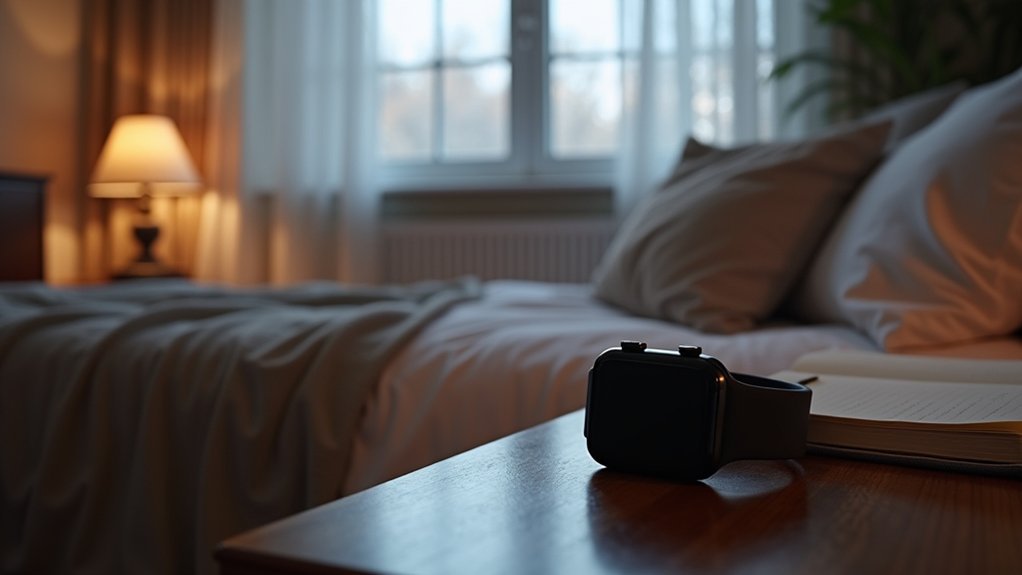
The effectiveness of sleep heart rate monitoring depends entirely on selecting the right device and implementing proper measurement techniques.
You’ll need to choose between clinical-grade equipment for suspected disorders, consumer wearables for daily tracking, or smartphone apps for basic monitoring.
To maximize accuracy and reliability:
- Ensure proper device setup – Follow manufacturer instructions for wearing and calibrating your device, especially with wearables that require correct positioning.
- Monitor consistently every night – Capture representative patterns since nightly variability exists in sleeping heart rates.
- Update firmware regularly – Keep your device’s software current to benefit from latest accuracy improvements.
- Choose thorough devices – Select monitors that track additional sleep metrics like heart rate variability and sleep stages for complete insights. Professional sleep studies provide the most comprehensive and accurate assessment of your sleeping heart rate patterns when precision is critical.
Clinical Applications and Long-term Health Insights
Beyond personal fitness tracking, sleep heart rate monitoring has evolved into a powerful clinical tool that’s revolutionizing how healthcare providers assess cardiac function and diagnose sleep-related disorders.
Your wearable device can estimate critical cardiac parameters like contraction time and ventricular ejection time with over 99% accuracy, providing real-time data transmission via Bluetooth for immediate clinical evaluation.
Modern wearables achieve clinical-grade precision in measuring cardiac parameters, delivering instant diagnostic data to healthcare providers through seamless wireless connectivity.
You’ll benefit from early detection of arrhythmias and nocturnal hypoxia-related cardiac stress that daytime assessments might miss.
Long-term tracking reveals trends linked to aging, stress, and chronic disease progression, while persistent deviations in your sleep heart rate patterns may indicate increased cardiovascular disease risk.
This data enables personalized clinical interventions and supports large-scale epidemiological studies connecting sleep heart rate with long-term health outcomes. Sleep heart rate monitoring provides valuable insights since sleep disorders affect nearly 1 in 2 individuals during their lifetime, making cardiac assessment during sleep particularly crucial for population health management.
Frequently Asked Questions
Can Certain Medications Affect My Sleep Heart Rate Patterns and Readings?
Yes, medications can greatly affect your sleep heart rate patterns. Beta-blockers lower heart rate, antidepressants may increase it, and cardiovascular drugs can disrupt sleep architecture, all altering your nocturnal heart rate readings.
How Long Should I Monitor Before Seeing Meaningful Sleep Heart Rate Trends?
You’ll need to monitor for at least three weeks to see meaningful sleep heart rate trends. Day-to-day variations of 5-8 beats are normal, so longer periods help distinguish real changes from noise.
What Should I Do if I Notice Concerning Changes in Patterns?
You should seek medical evaluation if patterns stay abnormal for several nights, document any stress or lifestyle changes, and avoid ignoring persistent irregularities that could indicate serious health issues.
Are There Specific Foods or Drinks That Impact Nighttime Heart Rate?
You’ll find caffeine, alcohol, and sugar greatly impact your nighttime heart rate. Avoid coffee, energy drinks, and alcohol before bed. High-glycemic foods and spicy meals also disrupt sleep patterns and elevate heart rate.
Can Sleep Heart Rate Monitoring Replace Regular Medical Checkups for Heart Health?
Sleep heart rate monitoring can’t replace regular medical checkups for heart health. You’ll miss critical assessments like blood pressure, cholesterol levels, and structural heart problems that require professional evaluation and diagnostic testing.
In Summary
You’ll gain valuable insights into your cardiovascular health by monitoring your sleep heart rate patterns. Start with a validated wearable device and establish your baseline readings over several weeks. Track trends rather than focusing on single nights, and don’t ignore persistent abnormalities. Your sleep heart rate data can reveal early signs of health issues and help optimize your recovery. Consistency in monitoring will provide the most meaningful long-term health benefits.

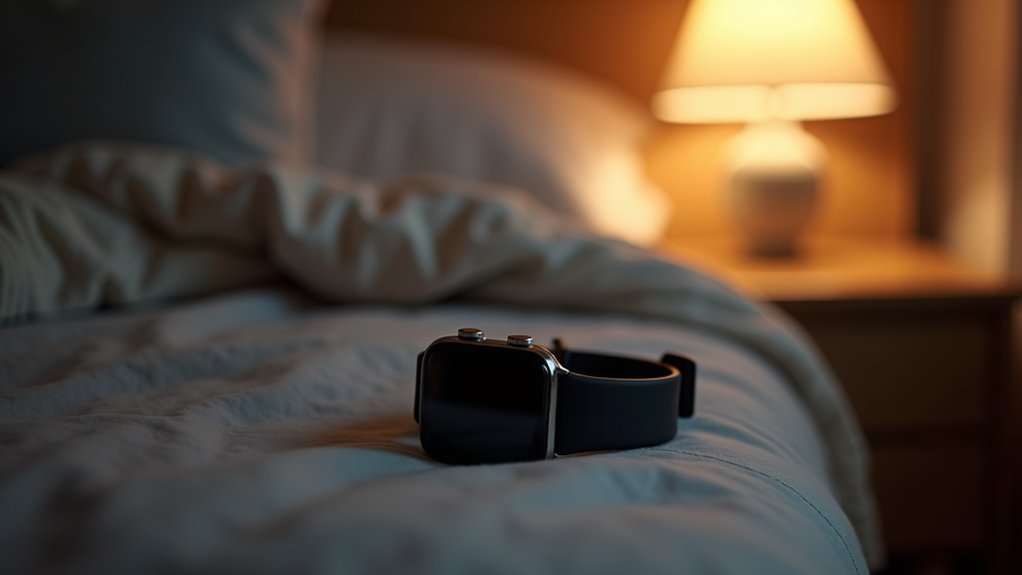
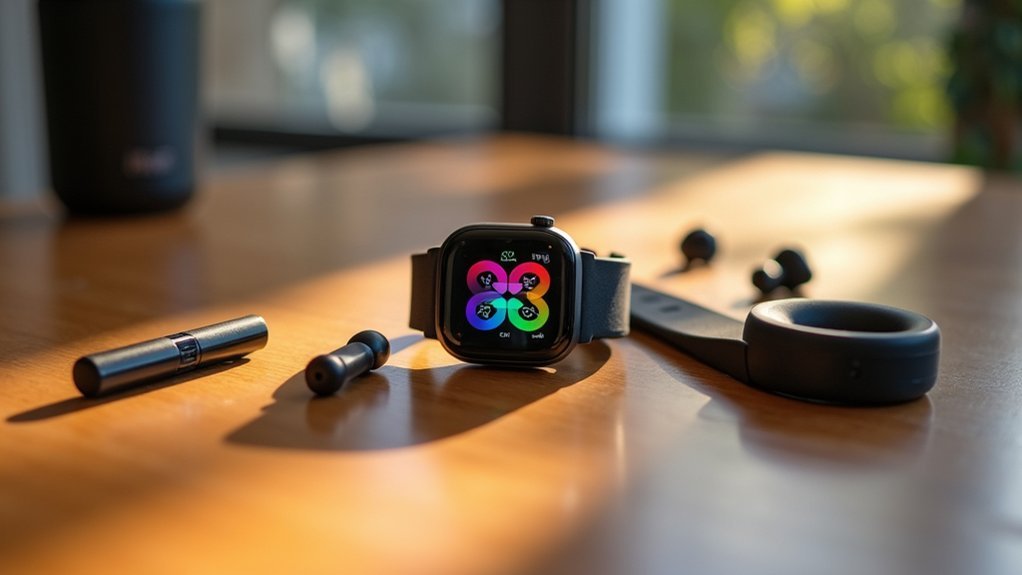
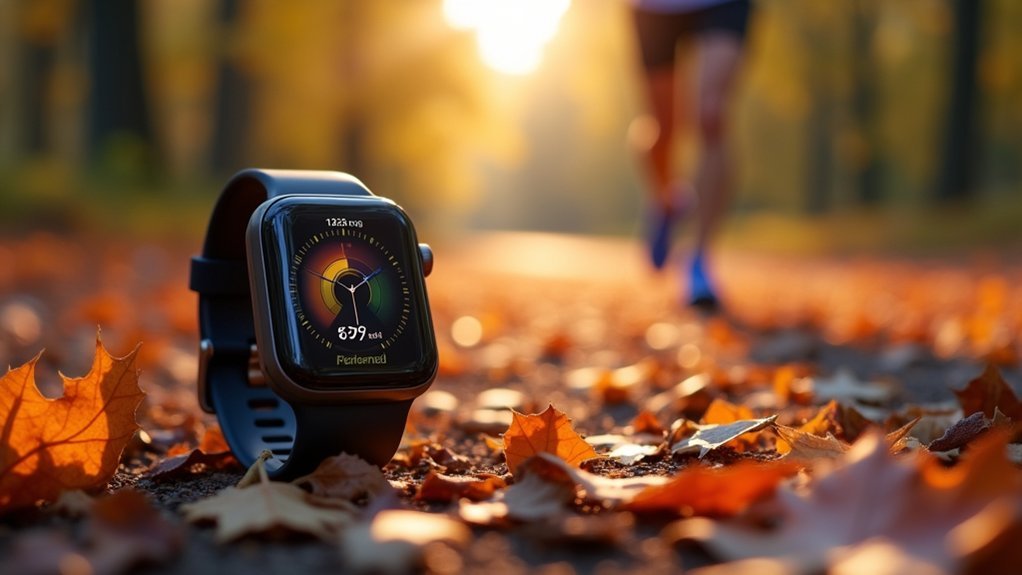
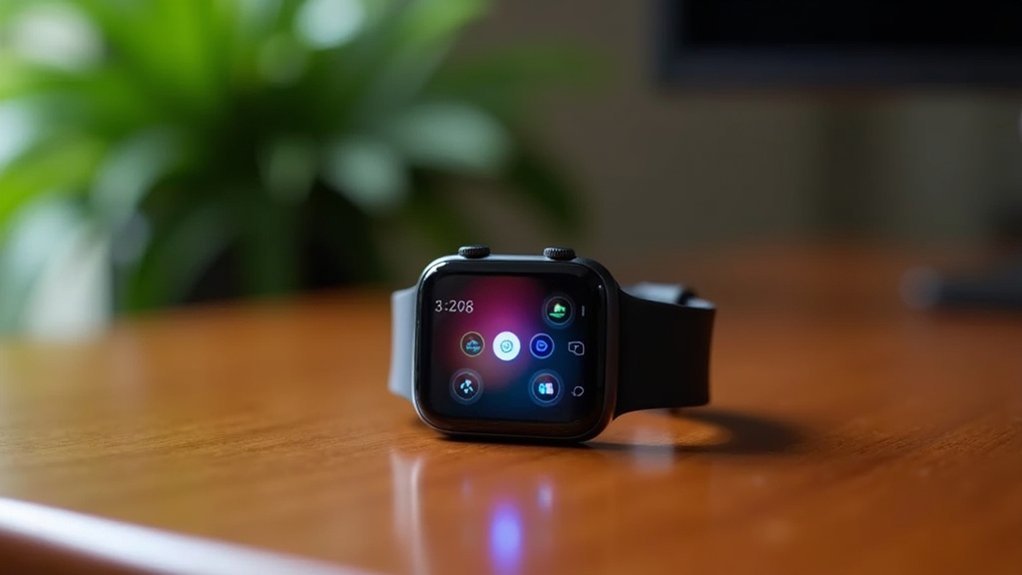
Leave a Reply